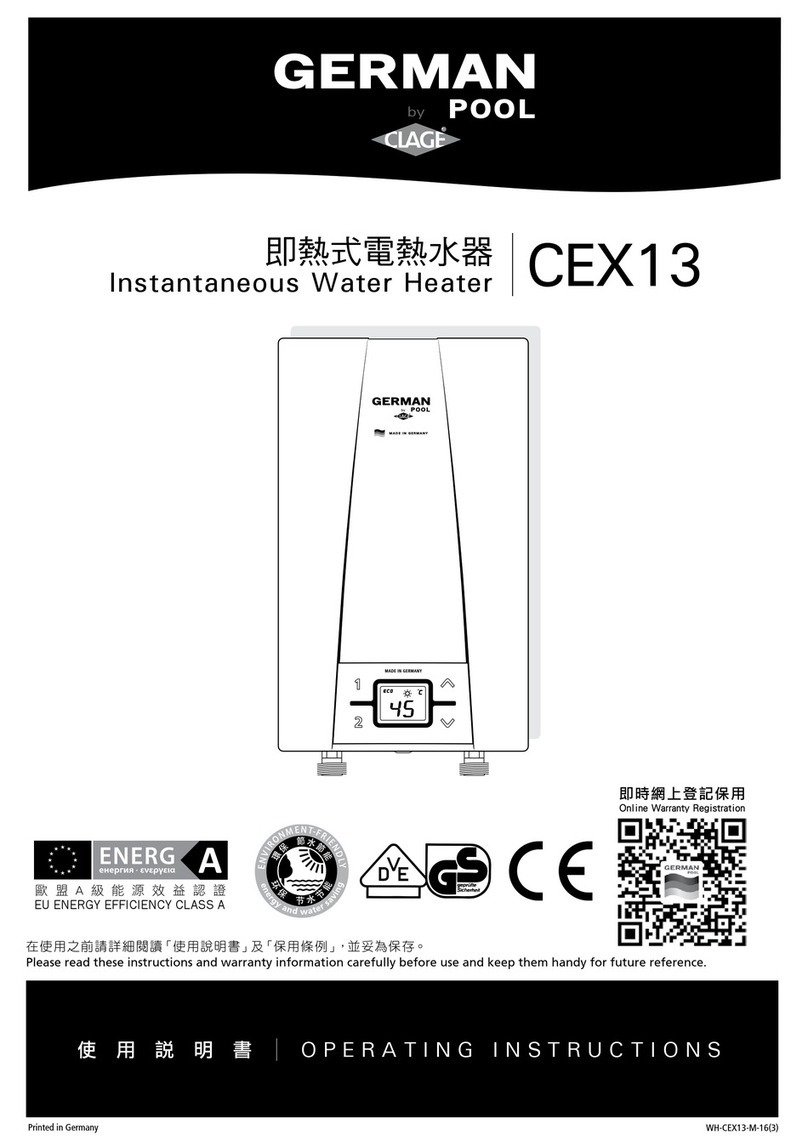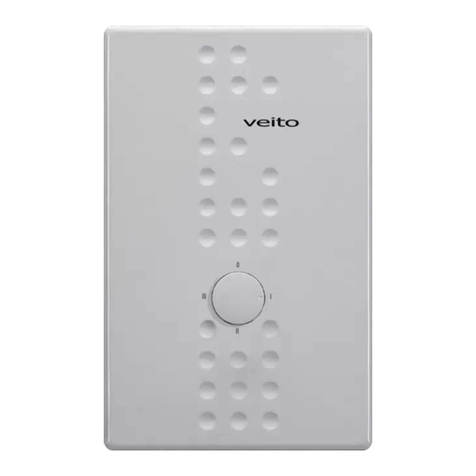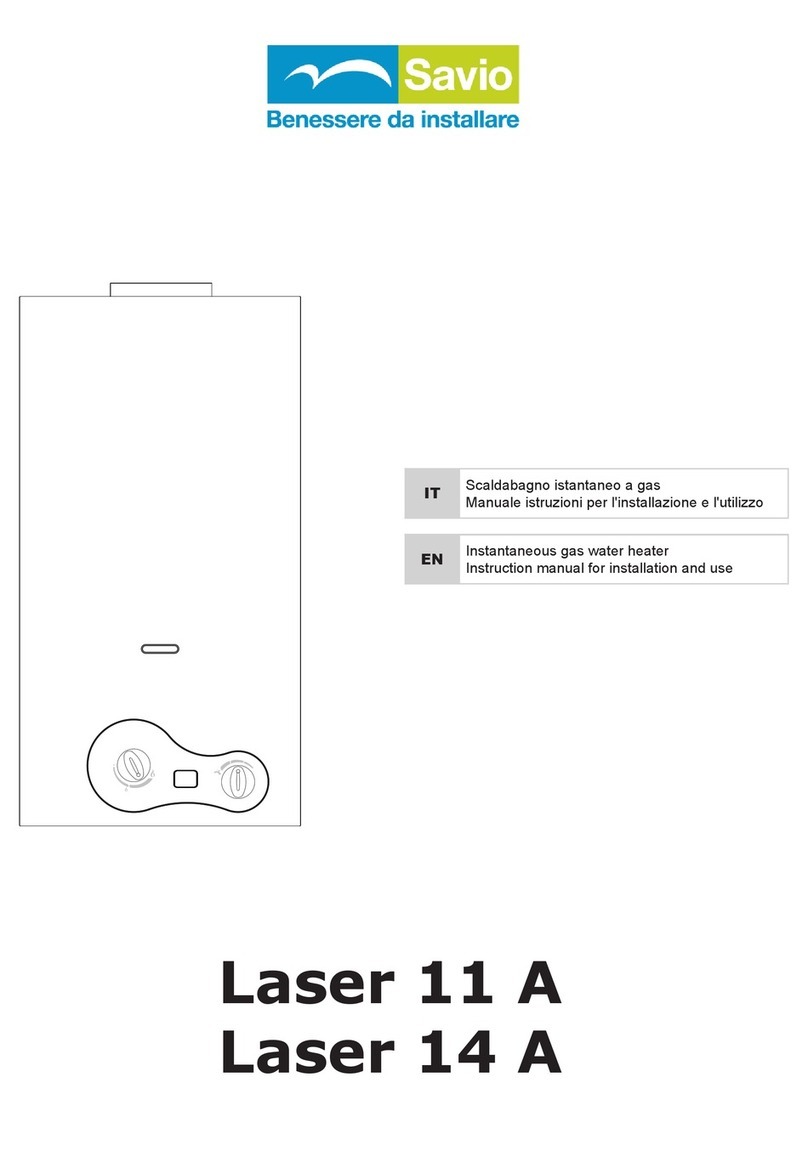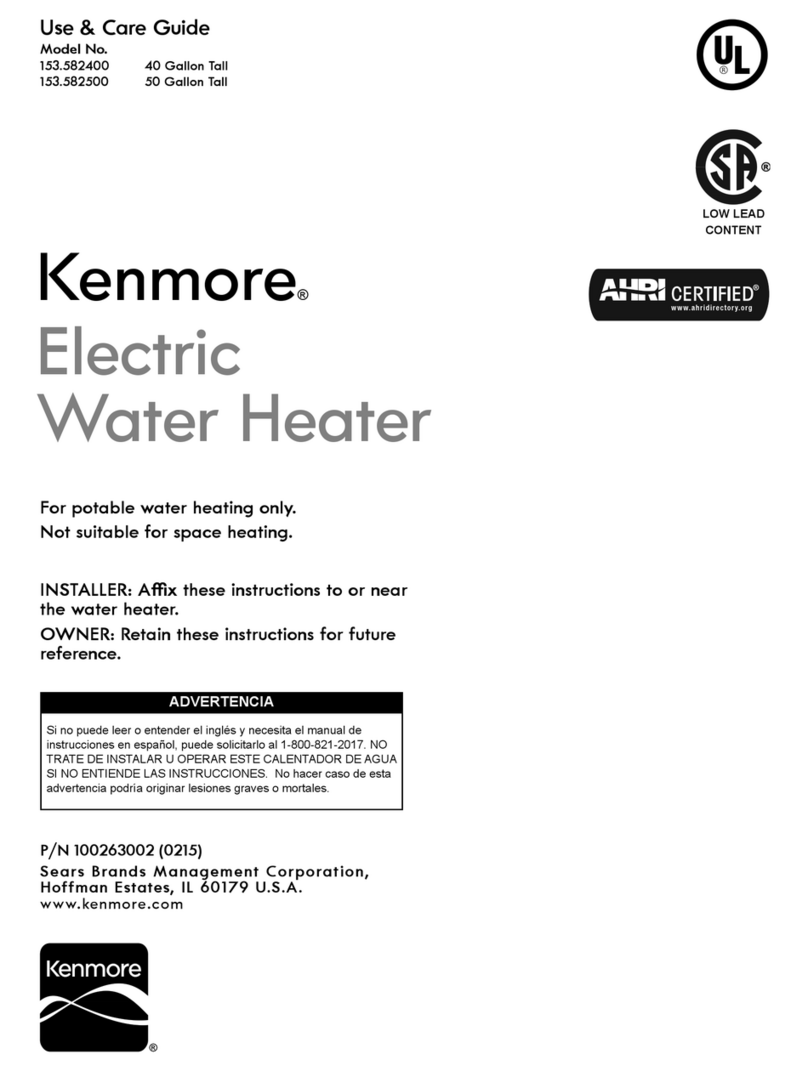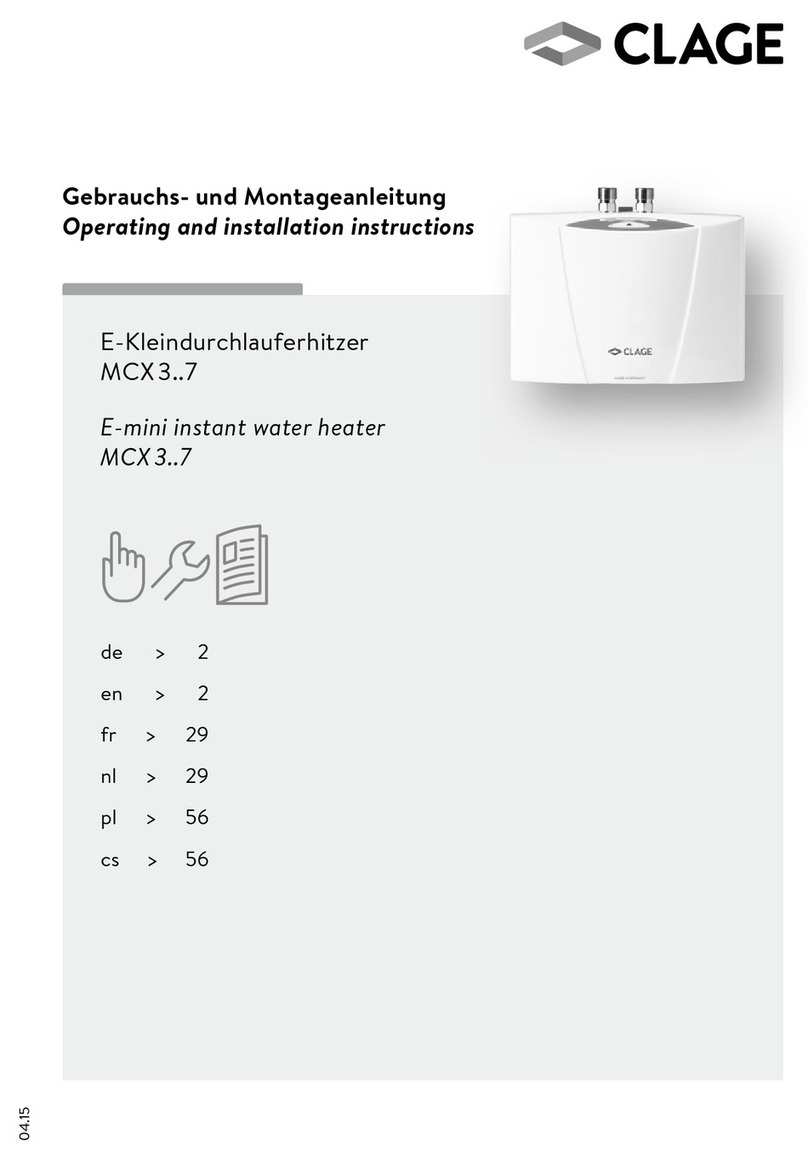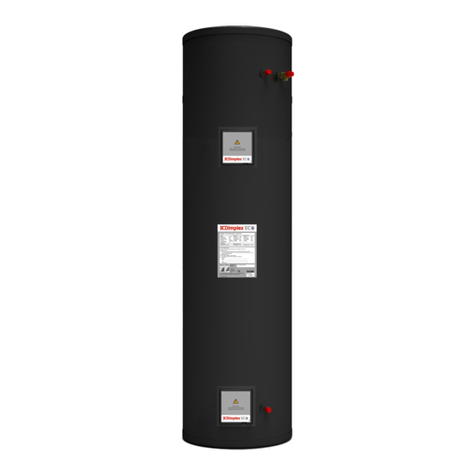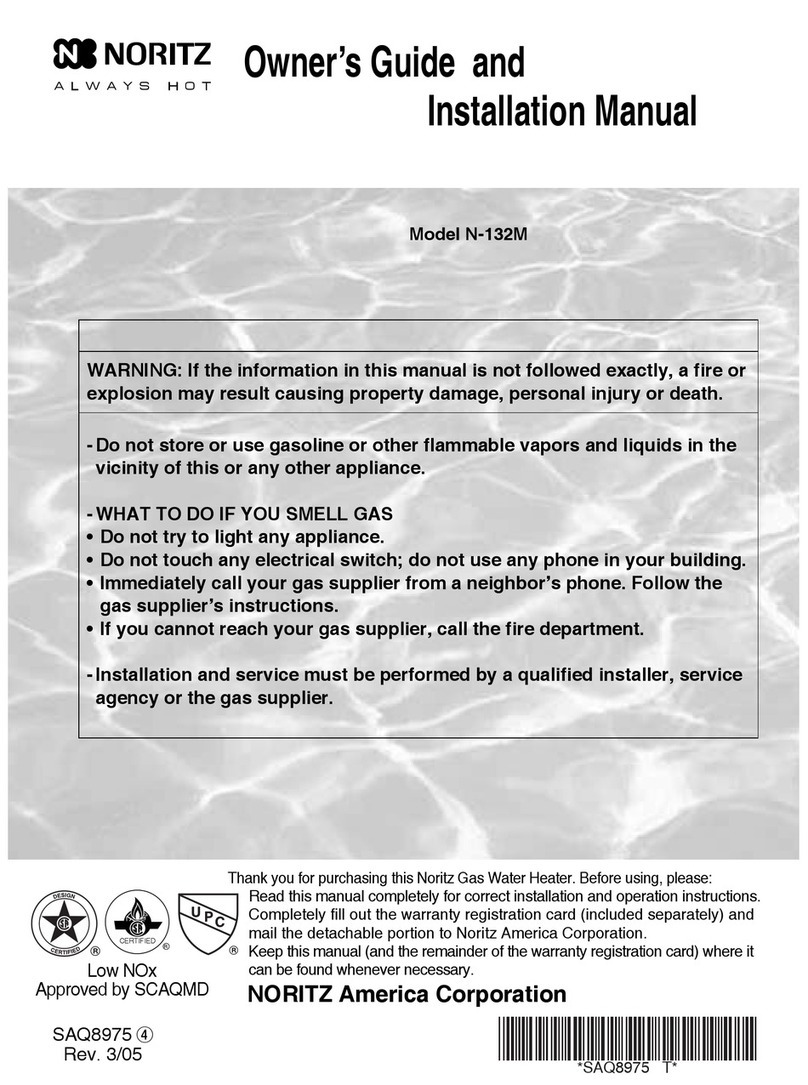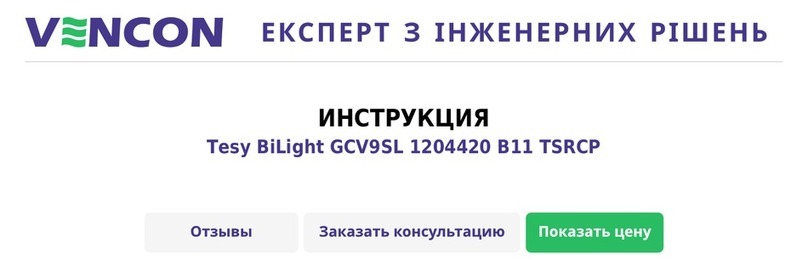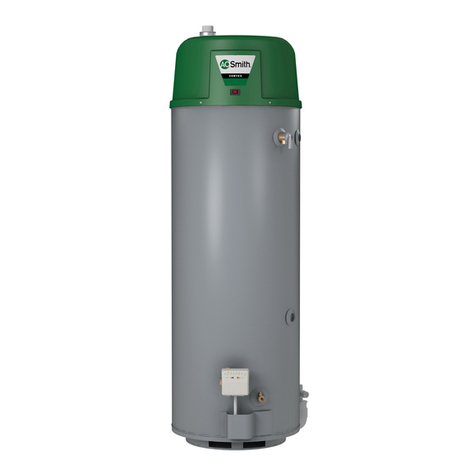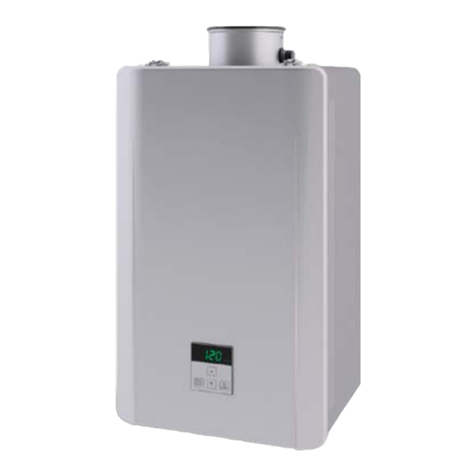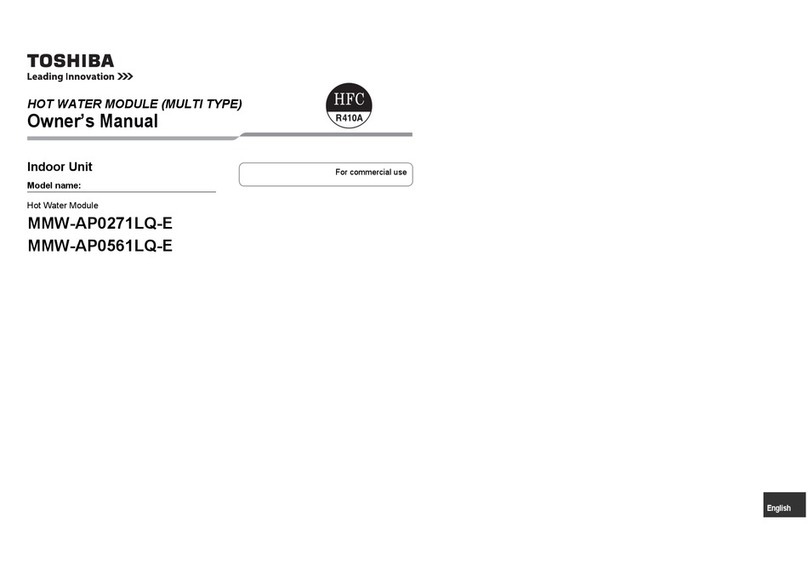
–2–
EN
Thank you for purchasing this Toshiba Hot Water Module.
Please read carefully through these instructions that contain important information, and ensure that you understand
them.
After completing the installation work, hand over this Installation Manual and Owner’s Manual as well as the
Owner’s Manual provided with the outdoor unit to the user, and ask the user to keep them in a safe place for future
reference.
Generic Denomination: Hot Water Module
Definition of Qualified Installer or Qualified Service Person
The hot water module must be installed, maintained, repaired and removed by a qualified installer or qualified
service person. When any of these jobs is to be done, ask a qualified installer or qualified service person to do them
for you.
A qualified installer or qualified service person is an agent who has the qualifications and knowledge described in
the table below.
Agent Qualifications and knowledge which the agent must have
Qualified installer
• The qualified installer is a person who installs, maintains, relocates and removes the air conditioners
(including the hot water modules) made by Toshiba Carrier Corporation. He or she has been trained
to install, maintain, relocate and remove the air conditioners (including the hot water modules) made
by Toshiba Carrier Corporation or, alternatively, he or she has been instructed in such operations by
an individual or individuals who have been trained and is thus thoroughly acquainted with the
knowledge related to these operations.
• The qualified installer who is allowed to do the electrical work involved in installation, relocation and
removal has the qualifications pertaining to this electrical work as stipulated by the local laws and
regulations, and he or she is a person who has been trained in matters relating to electrical work on
the air conditioners (including the hot water modules) made by Toshiba Carrier Corporation or,
alternatively, he or she has been instructed in such matters by an individual or individuals who have
been trained and is thus thoroughly acquainted with the knowledge related to this work.
• The qualified installer who is allowed to do the refrigerant handling and piping work involved in
installation, relocation and removal has the qualifications pertaining to this refrigerant handling and
piping work as stipulated by the local laws and regulations, and he or she is a person who has been
trained in matters relating to refrigerant handling and piping work on the air conditioners (including the
hot water modules) made by Toshiba Carrier Corporation or, alternatively, he or she has been
instructed in such matters by an individual or individuals who have been trained and is thus thoroughly
acquainted with the knowledge related to this work.
• The qualified installer who is allowed to work at heights has been trained in matters relating to working
at heights with the air conditioners (including the hot water modules) made by Toshiba Carrier
Corporation or, alternatively, he or she has been instructed in such matters by an individual or
individuals who have been trained and is thus thoroughly acquainted with the knowledge related to
this work.
Qualified service
person
• The qualified service person is a person who installs, repairs, maintains, relocates and removes the
air conditioners (including the hot water modules) made by Toshiba Carrier Corporation. He or she
has been trained to install, repair, maintain, relocate and remove the air conditioners (including the hot
water modules) made by Toshiba Carrier Corporation or, alternatively, he or she has been instructed
in such operations by an individual or individuals who have been trained and is thus thoroughly
acquainted with the knowledge related to these operations.
• The qualified service person who is allowed to do the electrical work involved in installation, repair,
relocation and removal has the qualifications pertaining to this electrical work as stipulated by the local
laws and regulations, and he or she is a person who has been trained in matters relating to electrical
work on the air conditioners (including the hot water modules) made by Toshiba Carrier Corporation
or, alternatively, he or she has been instructed in such matters by an individual or individuals who have
been trained and is thus thoroughly acquainted with the knowledge related to this work.
• The qualified service person who is allowed to do the refrigerant handling and piping work involved in
installation, repair, relocation and removal has the qualifications pertaining to this refrigerant handling
and piping work as stipulated by the local laws and regulations, and he or she is a person who has
been trained in matters relating to refrigerant handling and piping work on the air conditioners
(including the hot water modules) made by Toshiba Carrier Corporation or, alternatively, he or she has
been instructed in such matters by an individual or individuals who have been trained and is thus
thoroughly acquainted with the knowledge related to this work.
• The qualified service person who is allowed to work at heights has been trained in matters relating to
working at heights with the air conditioners (including the hot water modules) made by Toshiba Carrier
Corporation or, alternatively, he or she has been instructed in such matters by an individual or
individuals who have been trained and is thus thoroughly acquainted with the knowledge related to
this work.
Definition of Protective Gear
When the hot water module is to be transported, installed, maintained, repaired or removed, wear protective gloves
and ‘safety’ work clothing.
In addition to such normal protective gear, wear the protective gear described below when undertaking the special
work detailed in the table below.
Failure to wear the proper protective gear is dangerous because you will be more susceptible to injury, burns,
electric shocks and other injuries.
Warning indications on the hot water module
• This is the part for transportation. Be sure to remove this part before
operating the unit.
• To avoid water leak, wrap some sealing tape around the screw part.
• Do not operate VRF system before the commissioning of this product
is fully completed. Failure to do so will result in water freezing and
bursting/failure of the plate heat exchanger.
Set the DIP switch 4 of SW09 on the P.C. board of the header outdoor
unit "ON". (Factory default is "OFF")
VRF system will be stopped to avoid water freezing when the power
supply is disconnected.
Work undertaken Protective gear worn
All types of work Protective gloves
‘Safety’ working clothing
Electrical-related
work
Gloves to provide protection for electricians and from heat
Insulating shoes
Clothing to provide protection from electric shock
Work done at heights
(50 cm or more) Helmets for use in industry
Transportation of
heavy objects Shoes with additional protective toe cap
Repair of outdoor unit Gloves to provide protection for electricians and from heat
Warning indication Description
WARNING
ELECTRICAL SHOCK HAZARD
Disconnect all remote electric power
supplies before servicing.
WARNING
ELECTRICAL SHOCK HAZARD
Disconnect all remote
electric power supplies
before servicing.
3-EN 4-EN
+00EH99897401-3_00Ta.book Page 2 Wednesday, May 11, 2016 3:36 PM
